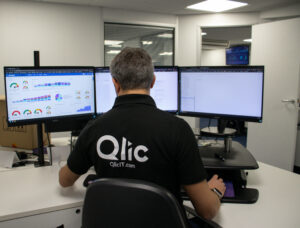When it comes to not-for-profits, staying on top of technology can be a challenge. However, hardware lifecycle can help ensure that your organisation has the most up-to-date machines such as computers and desktops to support your mission.
Here’s why hardware lifecycle is so important for not-for-profits…
fff
Cost Savings
Cost savings are always important when running a not-for-profit, hardware lifecycle can help in this regard. By replacing outdated machines with more powerful models running the most up-to-date software, organisations can enjoy the improved performance while reducing their costs by disposing of old equipment instead of holding onto it indefinitely. Plus, they can save on storage costs as well as wasteful energy consumption.
fff
Hardware Lifecycle Improves Security
Not only does using outdated systems put your organisation at risk from cybercriminals but also customers trust in your operations could be affected as well. Adopting a comprehensive replacement plan gives you greater control over who has access to what data; having a detailed record of what systems need replacing when and where can reduce these risks considerably.
fff
Increased Productivity
Slow or laggy machines will affect the productivity of your organisation. Having an up-to-date hardware strategy in place allows you to make sure employees have access to the right tools before things start to slow down. This leads to greater efficiency and better execution of day-to-day tasks such as donor outreach, fundraising campaigns, and meeting deadlines across departments.
Did you know?
We lose an average of 46 minutes a day because of slow technology, which equates to a whopping 24 days of work time a year and approximately £2,752 in cost!
Stat from TechTalk / Currys
fff
Hardware Lifecycle Reduces Maintenance Costs
By replacing an old and low-spec computer now, you save yourself from expensive repair costs down the line. By proactively upgrading to a more powerful machine with a better spec, you won’t have to worry about spending extra money on repairs or maintenance in the future.
fff
Do You Need Computer Leasing?
You wouldn’t expect to pay for any other asset (such as an employee) in advance, so why pay for your IT equipment upfront? At Qlic computer leasing is available, so if you find yourself needing to replace a dozen machines all at once, you can resort to computer leasing to help your charity financially.
fff
Summary
All in all, hardware lifecycle should be taken seriously by all organisations – particularly those operating under tight budgets like not-for profits. By understanding how hardware works and implementing replacement plans that take into account cost savings, improved security measures, and increased productivity outcomes – not–for–profits can get ahead of the competition for good!






